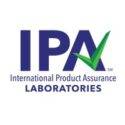Interested in the greener design? The Environmental Product Declaration (EPD) for ceramic tile made in North America, certified by sustainability leader UL Environment, is now available for use by architects and specifiers seeking to satisfy green building projects, such as those set forth by LEED and Green Globes.
The 23-page report, which you can check out here, is a comprehensive disclosure of the environmental impacts of North American-made ceramic tile. When using this certified EPD alongside other flooring products’ EPDs one thing is clear: Ceramic tile has the lowest 60-year environmental impact per square foot (and per square meter) across all major impact categories: global warming, abiotic resource depletion, acidification, smog formation, eutrophication, and ozone depletion.
Not only does the certified EPD for North American-made ceramic tile report tile’s low environmental impact, it also offers the environmental transparency and reporting necessary for building design professionals to satisfy requirements for countless green building points and green building criteria. Since well over 95% of the tile produced in North America is represented by the EPD, virtually all ceramic tile made in North America can help building design professionals meet sustainability requirements for transparency. You can find out more about the specific benefits on TCNA’s website.
The EPD specific to North American-made ceramic tile is derived from in-depth analysis of data related to tile manufacturing and use—from the raw material extraction process to disposal of tile at the end of its life—with emphasis on the priority considerations of the green building community, including energy and resource consumption and emissions to air, land, and water. The environmental impacts that are measured and the methodology for measuring them are dictated by the North American Product Category Rule (PCR) for flooring EPDs. By following this standard, the ceramic tile EPD reports the environmental facts of ceramic tile in a fashion similar to other flooring EPDs, much as nutrition labeling for food is standardized in order to simplify its use.
Learn more about these issues onsite at Coverings on Tuesday April 14th, where Bill Griese (TCNA) will explain how ceramic tile covered by the EPD can contribute to credits and compliance in popular green rating systems, making it more appealing when it comes to specifying for sustainable projects. His session is titled, “Performance and Transparency: The New Norm for Specifying Green Building Products Today.” You can find more information on conference programming here.






